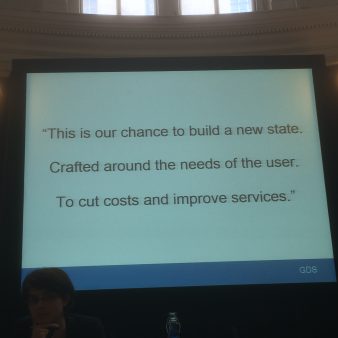Here comes the digital state
29 June 2015
Plaudits have been flowing fast recently for the digital creativity achievements of Wales’ UK government offices. Companies House, based in Cardiff, has been working hard to turn itself into a digital database service, free at the point of delivery to data users.
A few days later Matthew Hancock, Minister in charge of the Government Digital Service, was heaping praise on the Newport-based Office for National Statistics web-site, once described in the FT as a ‘national embarassment’ but now, following a detailed process of iterative improvement, winning rave reviews. According to the Minister, the beta version of the site will ‘cater to the needs of everyone from A-level students to academic economists, at a fraction of the cost of the original.’ The Swansea-based DVLA, of course, is already a poster-child in terms of digital delivery of a public service. The Intellectual Property Office, ONS’s neighbour in Newport, is also pretty digitally nifty.
There was also a flow of rich insights at the Westminster e-Forum ‘Delivering Digital Government’ conference last week, where speakers from the public and private sector painted a more detailed picture of a digitised government’s current state and prospects.
My own speech drew attention to a report from the US Centre for Data Innovation, which has been reviewing progress against the G8 (“big economy’) countries in delivering a set of Open Data goals proclaimed in 2013. This puts the UK at number one in terms of progress, with a score of 90 points, ahead of the US and Canada (80), France (65) Germany (25) and Russia (5). There are important lessons here for the Welsh Government.
I also offered an analysis of the UK party political manifestos’ content on digital government and digital matters generally, concluding that there’s more or less big party agreement on the digital government agenda. The prize for most detailed manifesto ambitions goes to the Liberal Democrats.

The Westminster conference also heard from my old friend and colleague Tom Loosemore, who is now Deputy Director of the Government Digital Services. I suspect Tom had a hand in Mathew Hancock’s speech, as there were a few echoes. Tom took us through current thinking about the meaning of ‘Government as a Platform’, which he defined as ‘shared infrastructure the whole of government can use to transform services.’ His examples – fishing licences, parking permits and business start-up procedures – illustrated how well managed data can be organised around platforms, but that this only works where you have high levels of trust between collaborating partners and the public. His top-line messages: it’s all about achieving simplicity; the technology is the easy part.’ Quote of the day: ‘This is our chance to build a new state. Crafted around the needs of the user. To cut costs and improve services.’
